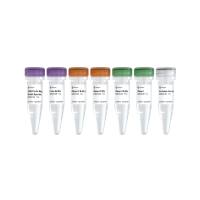Organotypic Hippocampal Slice Cultures as a Model of Limbic Epileptogenesis
互联网
619
Organotypic hippocampal slice cultures experience trauma, deafferentation due to cell loss or transection of afferent pathways,
and neuronal circuitry rearrangements much like the events that can lead to acquired temporal lobe epilepsy. Organotypic hippocampal
slice cultures can be maintained for months in vitro and exhibit a latent period followed by onset of electrographic seizures
involving the dentate granule cells, which is a hallmark of epileptogenesis and acquired epilepsy in humans and in vivo animal
models. The advantages of organotypic hippocampal slice cultures over in vivo models are that slice cultures exhibit a relatively
short latent period and can be treated quickly and easily with a known concentration of reagent without unwanted systemic
side effects. They are also more amenable to time-lapse studies and require fewer animals for drug screening and concentration–response
analyses. Thus, the in vitro organotypic hippocampal slice culture model is an attractive alternative to in vivo models to
begin to elucidate the molecular and cellular mechanisms underlying synaptic rearrangements and epileptogenesis.








